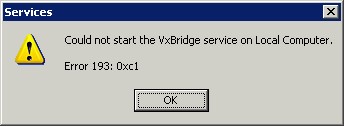Microsoft Visual Basic Runtime Error 53 On A Mac
When you write, compile, or run a Visual Basic application, the following types of errors can occur:
I have an Access 2003 DB, which has a VBA module. The module function points to an Excel file. The function is calling the Excel file through the command line like this: Shell 'Excel server dir. Nov 18, 2018 Run-time error '1004' is a common error while writing VBA Code. This tutorial explains, how to fix Application-defined or Object-defined error with simple example. After I click the “Run” button on the Excel page, a message pops up that reads: “Microsoft Excel needs to access the folder named ‘Documents’. Select this folder to grant access.” I then grant access to my “Documents” folder. Runtime Error 53 is a common Windows problem that indicates there is a missing Windows component. The error occurs when a file is accidentally misplaced by the system or when a.dll file is not found in its proper search path. This problem mostly concerns dynamic link library files, which are needed by Windows to perform most functions.
Design-time errors, which occur when you write an application in Visual Studio.
Compile-time errors, which occur when you compile an application in Visual Studio or at a command prompt.
Run-time errors, which occur when you run an application in Visual Studio or as a stand-alone executable file.
This article is for Office for Mac 2011. Are you using Office on PC? See Using product keys with Office 365, Office 2016, or Office 2013. Where do I find my Office for Mac 2011 product key? Once you have your product key, see Activate Office for Mac 2011. When you install or reinstall Microsoft Office, you are prompted to enter the product key. Find product key for microsoft office mac 2011.
For information about how to troubleshoot a specific error, see Additional Resources for Visual Basic Programmers.
Run Time Errors

If a Visual Basic application tries to perform an action that the system can't execute, a run-time error occurs, and Visual Basic throws an Exception object. Visual Basic can generate custom errors of any data type, including Exception objects, by using the Throw statement. An application can identify the error by displaying the error number and message of a caught exception. If an error isn't caught, the application ends.
The code can trap and examine run-time errors. If you enclose the code that produces the error in a Try block, you can catch any thrown error within a matching Catch block. For information about how to trap errors at run time and respond to them in your code, see Try..Catch..Finally Statement.
Compile Time Errors
If the Visual Basic compiler encounters a problem in the code, a compile-time error occurs. In the Code Editor, you can easily identify which line of code caused the error because a wavy line appears under that line of code. The error message appears if you either point to the wavy underline or open the Error List, which also shows other messages.
If an identifier has a wavy underline and a short underline appears under the rightmost character, you can generate a stub for the class, constructor, method, property, field or enum. For more information, see Generate From Usage.
Microsoft Visual Basic Runtime Error 53 Mac
By resolving warnings from the Visual Basic compiler, you might be able to write code that runs faster and has fewer bugs. These warnings identify code that may cause errors when the application is run. For example, the compiler warns you if you try to invoke a member of an unassigned object variable, return from a function without setting the return value, or execute a Try block with errors in the logic to catch exceptions. For more information about warnings, including how to turn them on and off, see Configuring Warnings in Visual Basic.